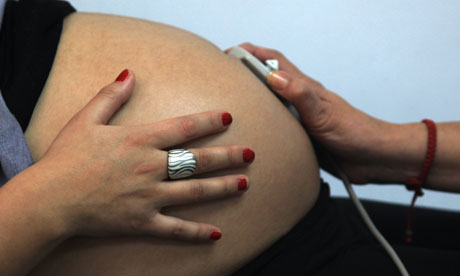
Four thousand babies are stillborn (meaning death in the womb after 24 weeks' gestation) in the UK every year. More die during this period than at any other stage of childhood, yet while deaths among newborns and toddlers under the age of one have fallen significantly over the past 15 years, stillbirth rates have barely changed.
Giving birth to death is about the most unnatural experience possible. It has a devastating impact on the whole family and friendship networks. Yet we at Sands – the stillbirth and neonatal death charity – believe, along with many experts, that at least a quarter of these deaths could potentially be prevented.
Stillbirth rates are falling in other similar high-income countries, where these deaths are actively fought against. Here, stillbirths are too often viewed as sad but unavoidable tragedies, best not talked about. Yet only 10% of stillborn babies have a lethal congenital anomaly: more than half have nothing wrong with them, accounting for "unexplained" deaths. Those which happen near the end of pregnancy (about 30%) are potentially the most preventable, if only the baby could be delivered in time.
When a pregnancy is identified as high-risk, the baby seldom dies. But the majority of stillbirths happen in so-called low-risk pregnancies: on the outside all appears to be OK; inside the baby is slowly failing to thrive. A dearth of research means shockingly little is known about what is going wrong and why perfectly formed babies, ready to live outside the womb, die before they are born. A similar lack of knowledge surrounded cot death 30 years ago, but huge amounts of money were poured into research, and answers were found that led to a rapid 70% fall in cot deaths. We need to do the same for stillbirth, but funding is lacking.
In the meantime, a lot more could be done now to improve those numbers. For example, a slowing of growth is a warning sign closely associated with stillbirth. Yet in the final third of a low-risk pregnancy Nice advises monitoring the baby's wellbeing with a tape measure –and nothing else. It's extraordinary that in the 21st century, that's all we offer mothers. Surely we can do better than that.
What's more, protocols for deciding which women should be referred on if it's suspected a baby is growing too slowly are unclear. Limits on scanning facilities, often available only on weekdays and in office hours, means referrals are delayed, leading to women having to wait days for ultrasounds in order to find out if their baby is OK. This is unacceptable.
A change in foetal movements can be a last minute sign of a baby's distress. But advice on monitoring movements remains confused, despite recent new guidance from the Royal College of Obstetricians and Gynaecologists. Too many women don't get basic information encouraging them to trust their instincts and report concerns quickly. When they do report, health professionals don't always know how best to respond, and women are sent home only for their baby to die hours later. Confidential enquiries have concluded that sub-optimal care may play a part in over half of stillbirths. Yet the process for reviewing deaths and learning lessons is inconsistent. Review is only successful if there is a real will to find out what happened and make change, but that is the exception rather than standard.
In England the problem is exacerbated by the decentralised structure of the NHS, which works against disseminating good practice and ensuring it is followed. Determined leadership at a national level is starting to change attitudes to stillbirth in Scotland and Wales, where joined up health systems make change easier. But England has much to learn from the action those countries are taking.

